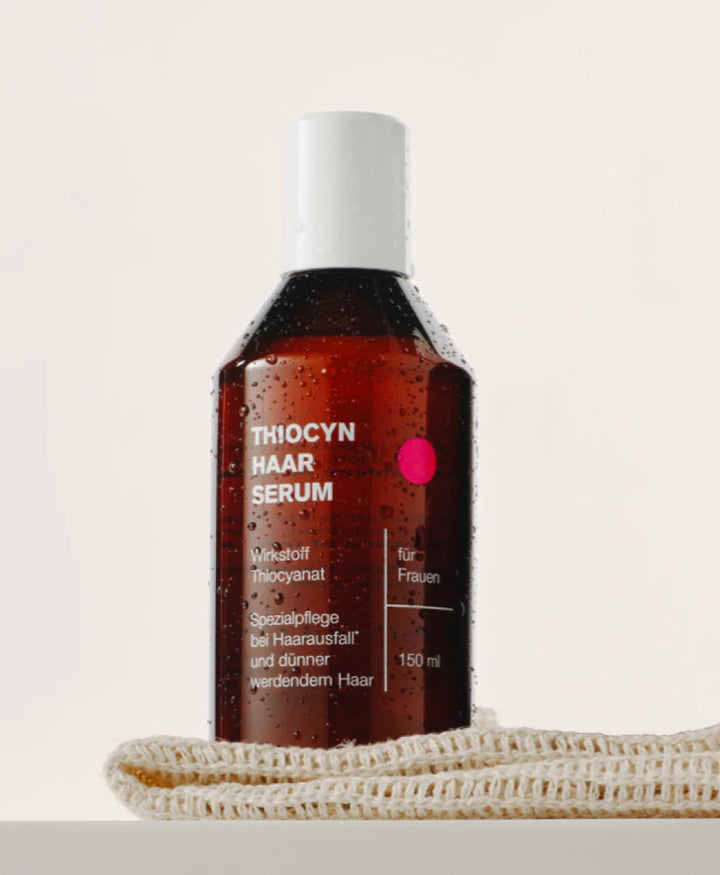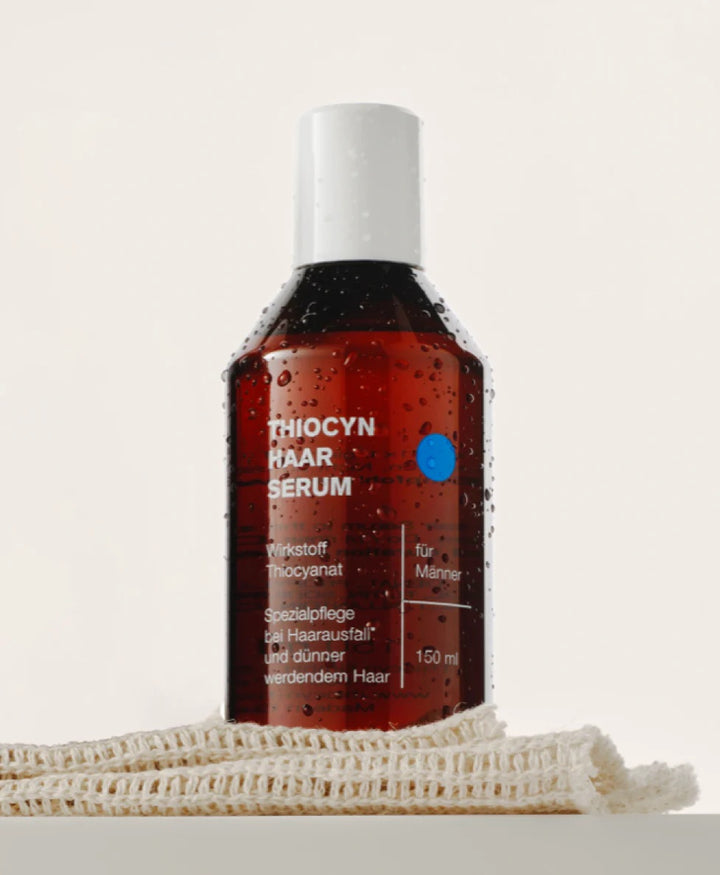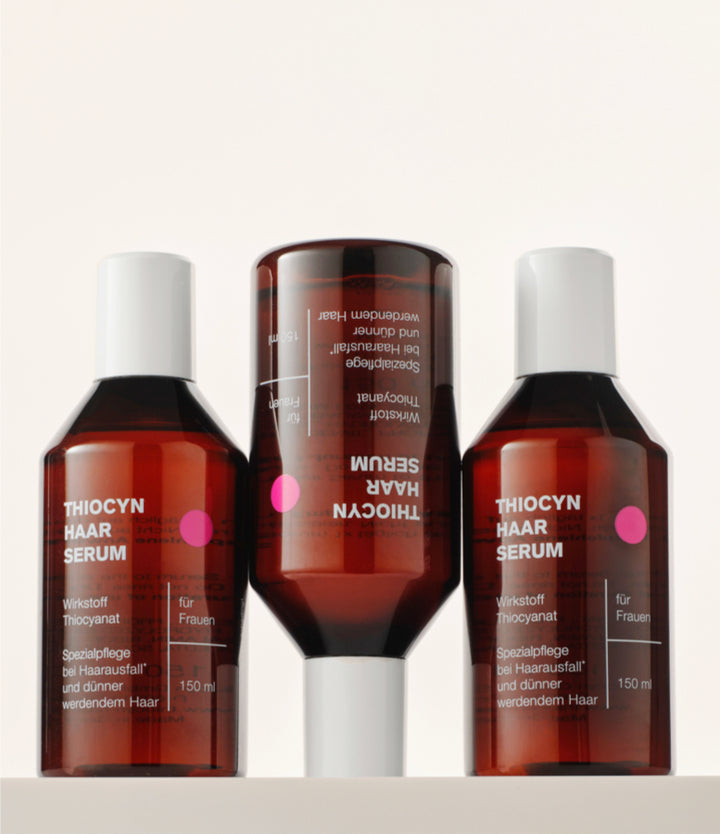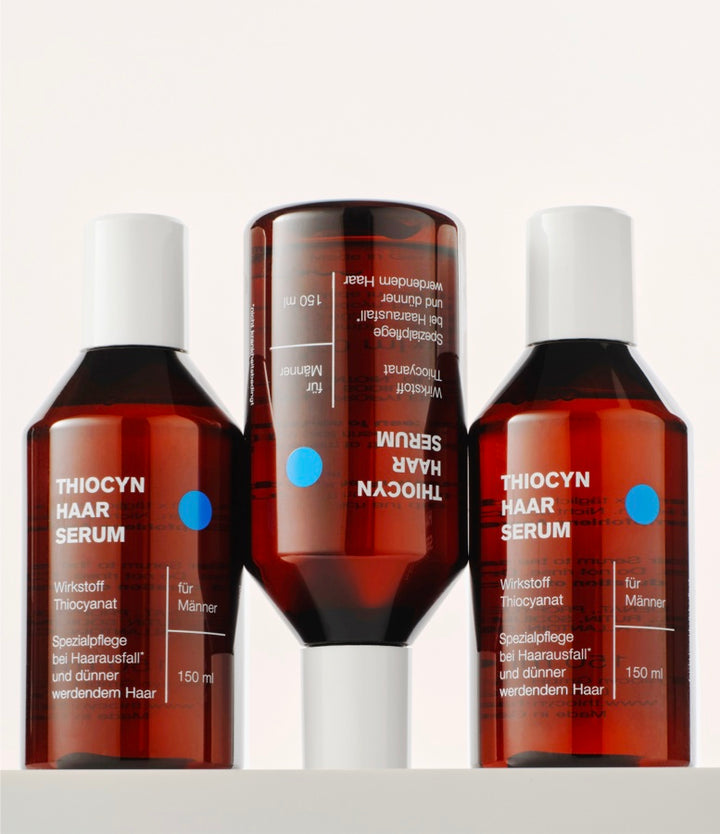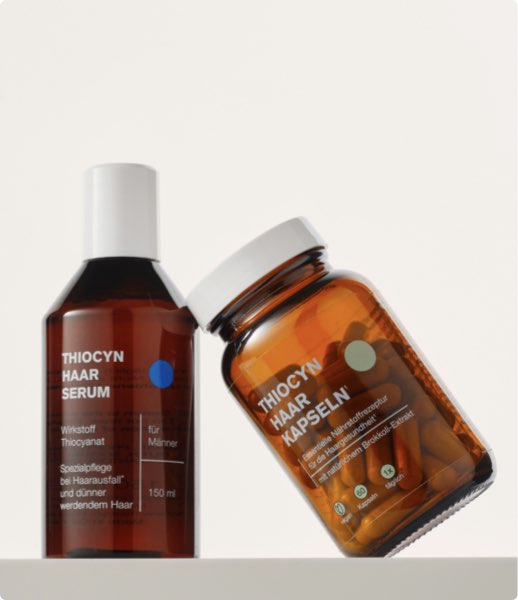| 04. July 2023
Hair loss in autumn: change of fur?

- Hair loss in autumn is an issue that particularly concerns women.
- Many affected people speak of “molt change”.
- The seasonal change of coat, or better: hair change in autumn, often turns out to be periodic, diffuse hair loss.
- Causes of diffuse hair loss are stress, hormonal imbalances, iron deficiency, unbalanced diet u.v.a.m.
- If the causes are treated, the hair will grow back.
Women often experience increased seasonal hair loss. When experiencing hair loss in the fall, many sufferers automatically think of a "molt." Their explanation: If hair is human fur, then it's logical that our hair, like that of other mammals, falls out in the fall so that new, possibly even thicker, hair can grow for the winter. The term "molt" is an interesting attempt to explain excessive hair loss.
Better protective function of the hair
The "moulting" or hair loss in autumn is explained as a legacy of the phylogenetic past of Homo sapiens. Women, in particular, notice hair loss immediately. Because they brush their hair daily, they count more than 100 hairs in the brush head every day for several weeks. This is very worrying. However, the hair usually grows back, not as a denser or thicker "winter coat," but without damage to the hair structure caused by wear and tear or excessive grooming. With the shedding, new hair can better fulfill its evolutionary function—protection against cold and weather.
Sun as a trigger for hair change
Today, humans no longer have fur, except for a few men with extremely thick body hair, so the shedding of Homo sapiens is only noticeable on the head. The most important factor explaining the shedding in autumn is probably the intense sunlight of summer. Heat and UV radiation cause a particularly large number of hair follicles to transition from the growth phase to the resting phase. These hairs remain more or less loosely attached to the hair follicle for a few weeks and are then released from the scalp by a mechanical stimulus, such as brushing or washing.
Seasonal or periodic diffuse hair loss?
Seasonal hair loss in the fall isn't cause for concern. However, if the hair doesn't grow back, other causes must be considered. Seasonal hair loss often turns out to be periodic, irregularly recurring, diffuse hair loss.
Female hair follicles in particular react very sensitively to a variety of disruptive factors such as Hormonal imbalances after pregnancy or during menopause, mental or physical stress, thyroid dysfunction, iron deficiency, unbalanced diet, infections but also skin diseases and metabolic diseases.
Normally, the ratio of hairs in the growth phase to hairs in the resting phase, which will soon fall out, is 4 to 1. Because hair cycles vary in length, healthy hair growth never results in thinning or bald patches on the head. However, with diffuse hair loss, many thousands of hair cycles occur synchronously. The hairs transition from the growth phase to the resting phase almost simultaneously and then fall out at the same time. The hair thins quite rapidly in a short period of time.
Diagnosis of diffuse hair loss
It is not necessary to bring a ball of lost hair to the dermatology consultation.After visually examining the scalp and hair, the doctor will gently pull on a tuft of hair at different locations on the head (a pull test). If more than 10% of the hairs detach from the root, this indicates shortened hair cycles, meaning more hair follicles than normal are in the telogen phase and ready to fall out.
The doctors then ask about events that occurred two to four months before the onset of hair loss, such as major surgery or a period of high stress.
It is known that some diseases also cause hair loss, for example, metabolic diseases such as diabetes, when high blood sugar levels lead to circulatory disorders at the hair root, or chronic inflammatory bowel diseases such as Crohn's disease, when the supply of nutrients (protein, carbohydrates, fat), vitamins, and trace elements to the actively dividing hair root cells is no longer guaranteed.
A list of medications and their side effects can also be very helpful in identifying the cause of hair loss. A blood test provides further clues. The lab checks inflammatory markers, iron, or thyroid levels.
The rough quantitative measurement of the tensile test is refined with the trichogram method. The trichogram serves to precisely determine the hair root status. Normally, there are approximately 80–85 % of hair in the growth phase (anagen hair), approx. 1 % in the transition phase (catagen hair) and approx. 15 – 20 % in the resting phase (telogen hairs).
For some time now, more and more dermatologists’ practices have been equipped with aTrichoScan Equipped with a specific area of the head, the scalp is photographed regularly. These images are stored on a computer. This makes it possible to document and compare the progression of hair loss or new hair growth over a longer period of time.
Therapy for diffuse hair loss
The seasonal increase in hair loss in autumn is followed by new hair growth. Since hair loss regulates itself, it is more accurate to refer to it as a hair change.
No therapy is necessary if diffuse hair loss stops due to the spontaneous elimination of the causes and healthy hair growth resumes more or less automatically, such as in the fourth to sixth month after pregnancy when the estrogen level is back in balance.
If medications with the side effect of hair loss are discontinued and replaced with comparable medications, there is also a good chance that diffuse hair loss will be combated.
Diseases such as thyroid dysfunction, infections or diabetes mellitus must be treated so that the symptom of hair loss disappears.
If no Causes of diffuse hair loss If the cause is not found or if the cause cannot be successfully treated, it is very beneficial for the weakened hair roots to be protected from growth-disrupting influences. Stabilizing cell metabolism at the hair root and normalizing the hair cycle has proven very beneficial. Thiocyn Hair Serum can be of great help in this regard.
What is thiocyanate
Thiocyanate is a natural molecule that, like water or oxygen, has accompanied the development of life from the very beginning and is therefore of great importance to the human organism – for example, for cellular metabolism, including at the hair root, where hair growth occurs. Thiocyn Hair Serum contains the patented thiocyanate active formula.
How Thiocyn Hair Serum works
Applied once daily, Thiocyn hair serum detoxifies the oxygen radicals that inhibit hair regeneration, stabilizes cell metabolism, and normalizes the unbalanced hair cycle – without any known side effects.
Read by 23,000 people
Do it like 23,000 others and find out how you can improve your hair health - with great offers and discounts as well as helpful advice
